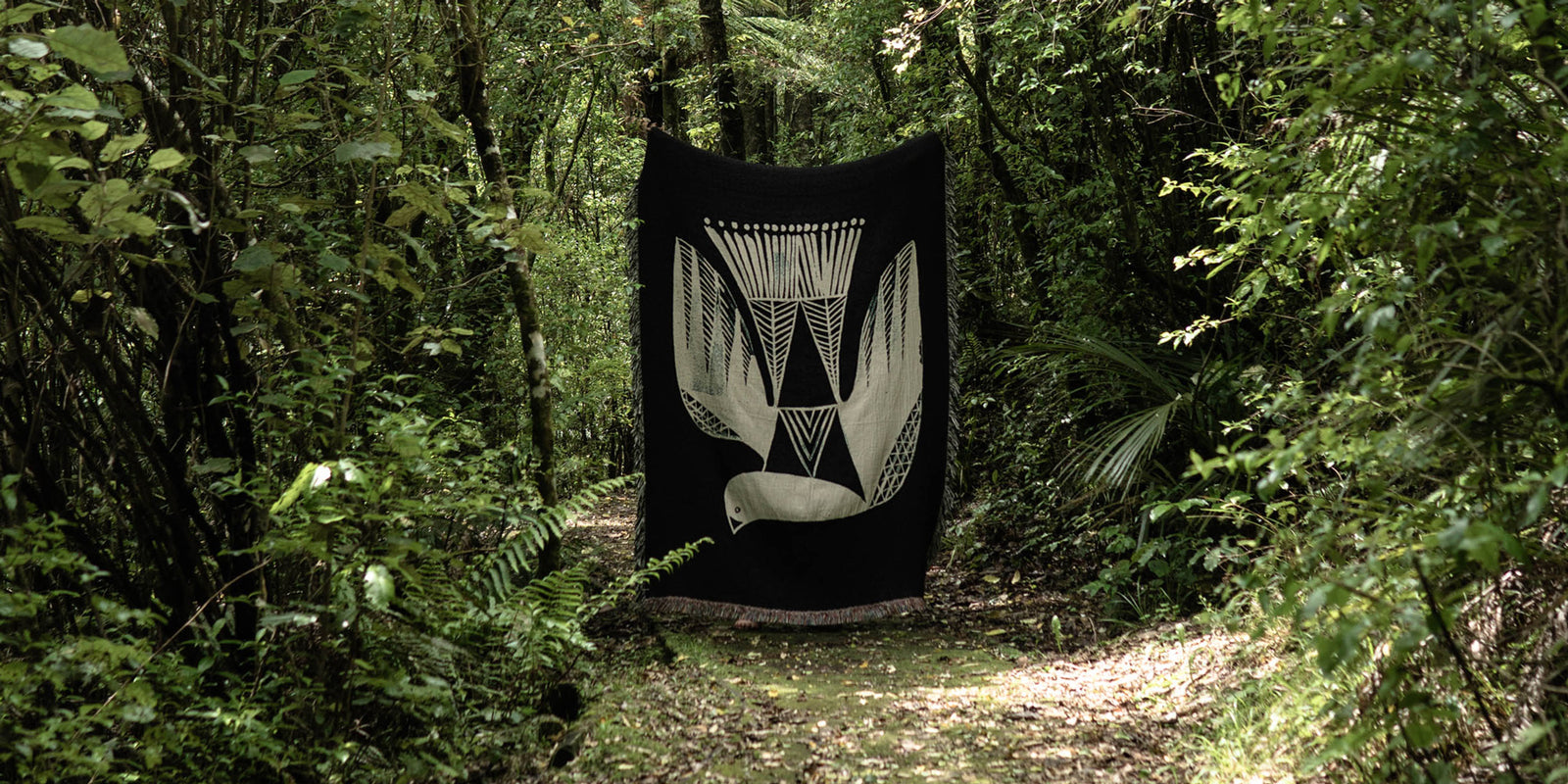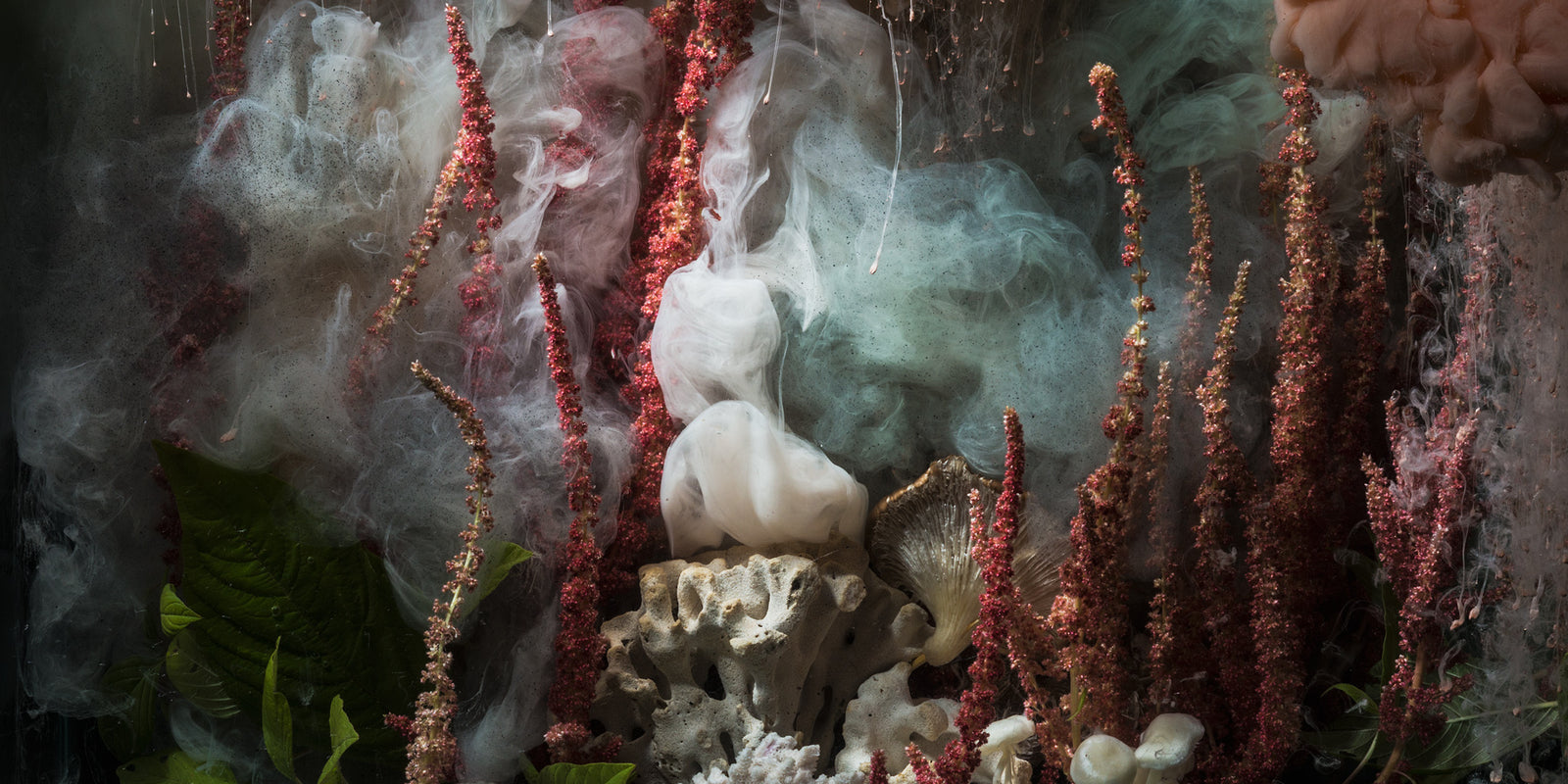Artist Studio Visit with Rakai Karaitiana
Rakai Karaitiana, a multi-disciplinary artist from Waimārama, Hawkes Bay, is renowned for his versatility across various artistic mediums. He is a resident artist here at endemicworld. His studio, an explosion of creativity, showcases the diverse materials he works with simultaneously. Here, amidst the echoes of the studio’s industrial past, Rakai channels his creativity into expressive paintings, commissioned rugs, graphic design projects, and stone reliefs.

Rakai Karaitiana in the artist studios at endemicworld.
Mastering Multiple Mediums
Rakai's journey as an artist is marked by his mastery of at least six different mediums, honed through necessity and a journey of self-discovery. His work is marked by resilience and defiance and he moves effortlessly across different projects, producing multiple works within any series he touches.

'Hinemoana' acrylic painting on canvas in the making.
'Te Whana - Rebel Riders'
When we visited, Rakai was up to number 48 in his series, 'Te Whana - Rebel Riders,'. The idea for this collection emerged as a response to community and his own personal displacement after the Hawkes Bay floods. “I started painting the Te Whana - Rebel Riders series immediately after cyclone Gabriel. Te Whana is to rebel and an expression when a horse kicks. There are many narratives involving the relationship between Māori and the horse, and I’m trying to touch on some of these as well as create my own. When looking through collection archives of flags, I always saw ‘Rebel Flag captured by…’ Many of these flags are Rongo peace flags. I’m creating my own gang of peace riders. I want them to be an army who ride in peace, and instead of guns, these rebels carry gardening tools like Kō and Timo. They come to help rebuild, re-establish, and regenerate.”

Painting one of the first concepts from 'Te Whana - Rebel Riders'
Across more than 80 paintings, Rakai has reimagined rebellion as a force bringing aid and empowerment. Rakai describes a need to “balance discipline with obsession and merge craftsmanship with intuition.” He is driven by a desire to challenge accepted histories and highlight the minority voice. “Māori who protested were always considered to be the rebels."

Rakai prepares his own gesso using a combination of clay slip and acrylic.
Community and Inspiration
Rakai’s deep sense of community from his home in Waimārama has been a driving force in his work. In his collaborative retail venture with his wife Melaina, Rakai discusses the value of hāpori. “We were able to build a small but really good community of people that were actually interested in what we do - myself and my wife. They have been a very supportive audience.” His early years, spent surfing the coastline of the Hawkes Bay, instilled in him a love for natural materials and a connection to the whenua. He is influenced by contemporary Māori artists as well as early figurative Ringatū art.

On Friday afternoons, Rakai pops across the road to Studio One - Toi Tū to get his uku fix.
From painting to rug-making - Rakai immerses himself fully. His works are not only a reflection of his artistic journey but also a testament to his commitment to his craft and community.

Creative process
During our discussion, I found it fascinating how the creative process involves knowing when to release a piece by balancing imperfection and quality. Rakai explains that this threshold is determined through self-critique and consideration for the audience, defining the elusive moment of completion.

"You do a few laps on a piece. You start it, you get to a point, you come back to it, revisit it, and you look at it. Then go and fix the bits that you're not happy with. And then you do a few rounds of that. And at a certain point, it's not annoying me so much anymore. I've got to bench my obsessiveness and then deal with the priority of what's in front of me. Commission work takes priority because that's my income."

Revisiting 'Feathers and Peace' cotton throws.
This constant cycle of critique, repair and craft highlights the delicate balance Rakai maintains in his creative process.
Looking Ahead
Rakai Karaitiana’s journey as an artist is a testament to his versatility, community connection, and commitment to challenging narratives.

Kererū throw, an early design first released in 2017.
His future projects are highly anticipated and his work continues to inspire and provoke thought.





